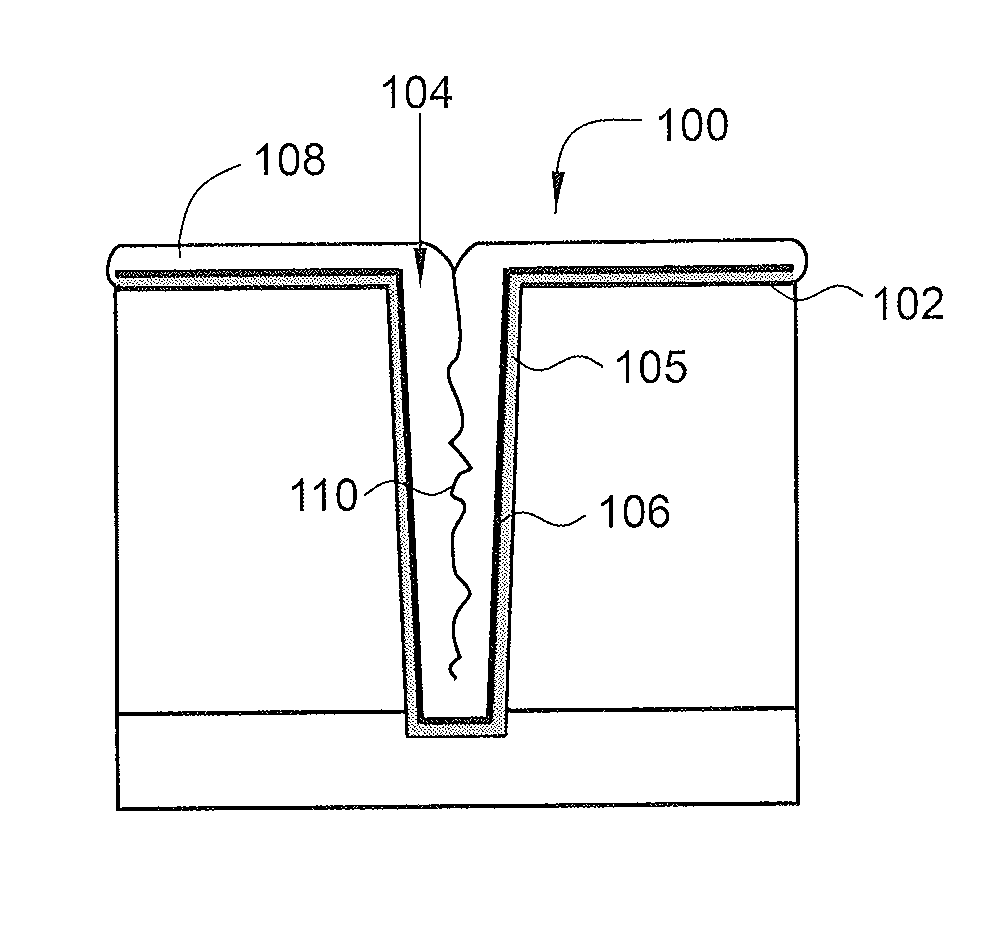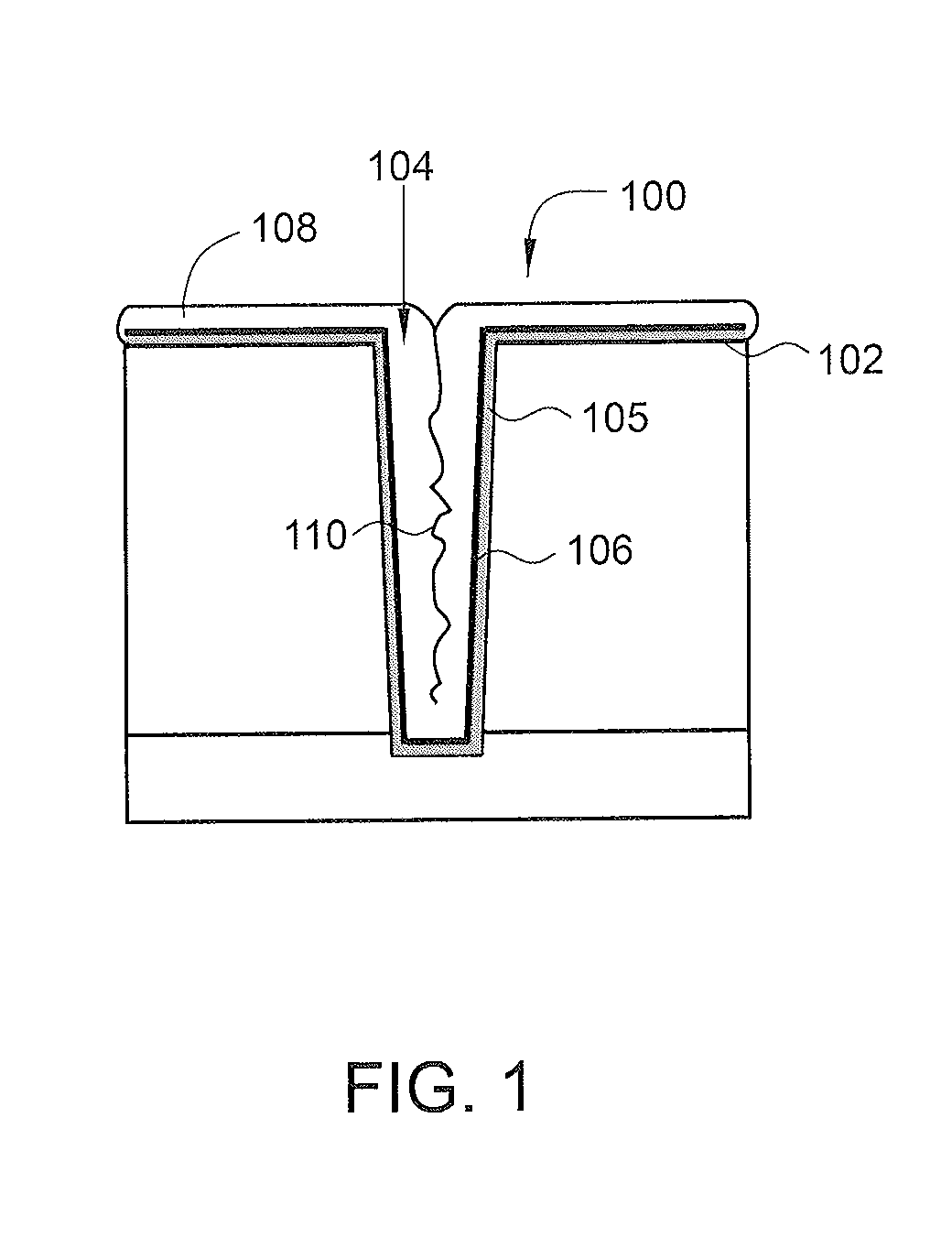Plasma treatment of film for impurity removal
a technology of impurity removal and plasma treatment, applied in the field of methods, can solve the problems of increasing processing capacity, increasing the size of circuits and devices, and reducing the extendability of techniques into less than 20 nm features, and reducing the resistance of underlying layers, so as to reduce the undesired effects of nucleation layers.
- Summary
- Abstract
- Description
- Claims
- Application Information
AI Technical Summary
Benefits of technology
Problems solved by technology
Method used
Image
Examples
Embodiment Construction
[0018]Embodiments of the present invention generally provide methods of CVD deposition of metals, such as tungsten, in small features while reducing resistance of or removing the need for underlying layers. Deposition of tungsten in features by standard techniques can lead to an increase in both the starting bulk and the overall resistance of the deposition product. Tungsten nucleation layers and in particular ALD nucleation layers from B2H6 and tungsten hexafluoride (WF6) have been successful in terms of conformality and in promoting good tungsten fill for features less than 32 nm, but are generally highly resistive compared to tungsten from WF6 and H2. Experimentally determined resistance for ALD tungsten deposited from B2H6 and WF6 is approximately 150 μΩ-cm in comparison to CVD tungsten deposition from WF6 and H2 which is less than 20 μΩ-cm. Both the ALD tungsten and the CVD tungsten are subsequently deposited on a tungsten nitride (WN) layer to increase adhesion to underlying s...
PUM
| Property | Measurement | Unit |
|---|---|---|
| Temperature | aaaaa | aaaaa |
| Temperature | aaaaa | aaaaa |
| Temperature | aaaaa | aaaaa |
Abstract
Description
Claims
Application Information
 Login to View More
Login to View More - R&D
- Intellectual Property
- Life Sciences
- Materials
- Tech Scout
- Unparalleled Data Quality
- Higher Quality Content
- 60% Fewer Hallucinations
Browse by: Latest US Patents, China's latest patents, Technical Efficacy Thesaurus, Application Domain, Technology Topic, Popular Technical Reports.
© 2025 PatSnap. All rights reserved.Legal|Privacy policy|Modern Slavery Act Transparency Statement|Sitemap|About US| Contact US: help@patsnap.com



